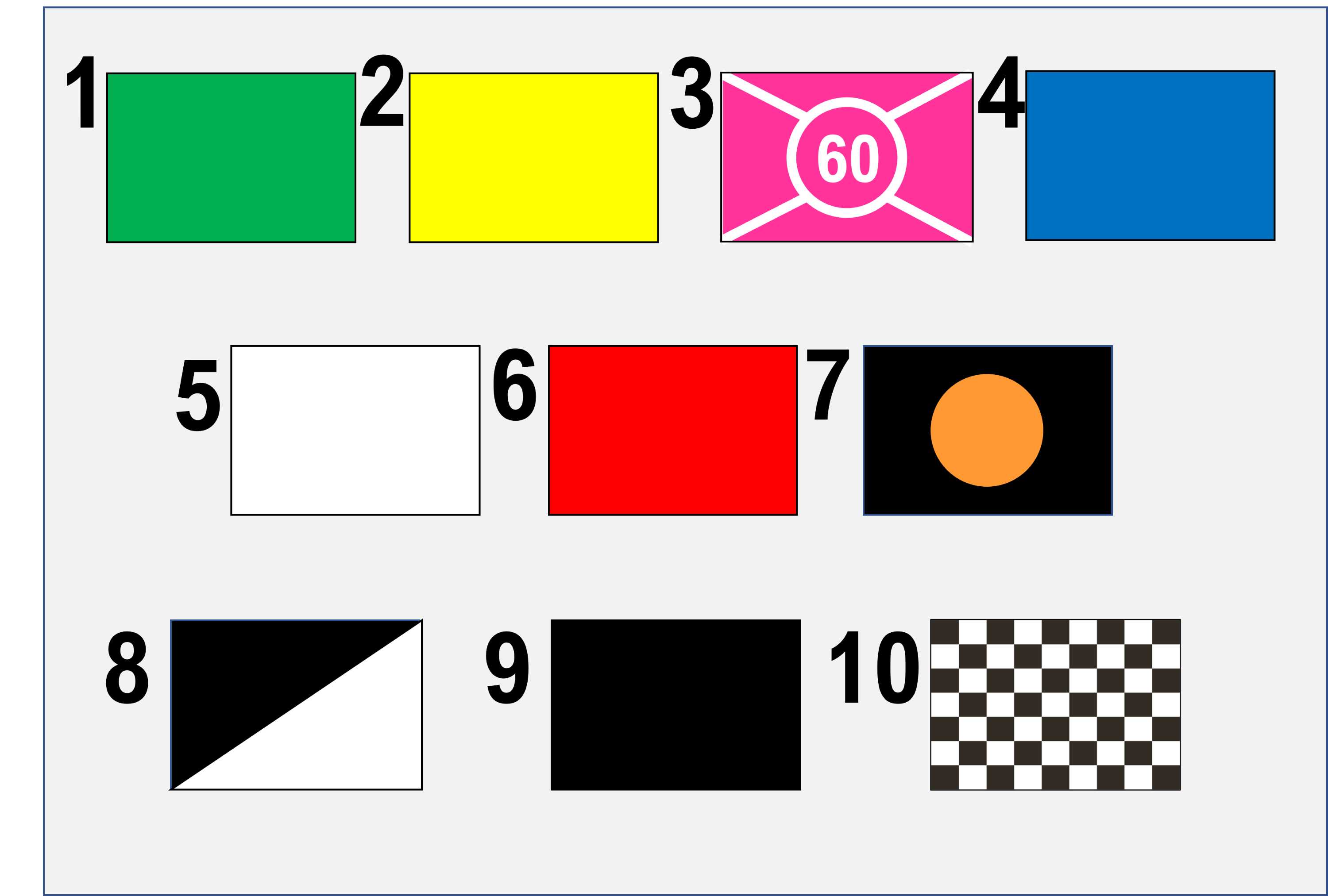
Racing Flags Trivia Quiz
Motor racing uses a number of different flags to give information to drivers and those watching. In this quiz you have to identify what each of the flags shown means.
A label quiz
by Stoaty.
Estimated time: 3 mins.
- Home
- »
- Quizzes
- »
- Sports Trivia
- »
- Motor Sports
